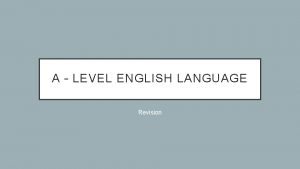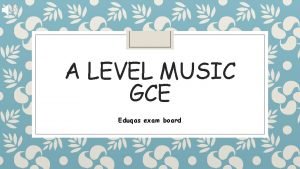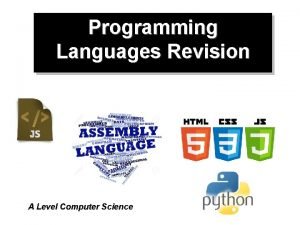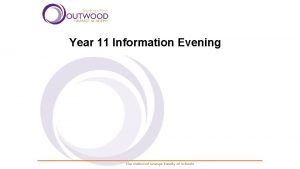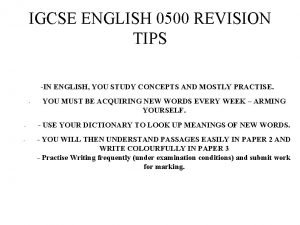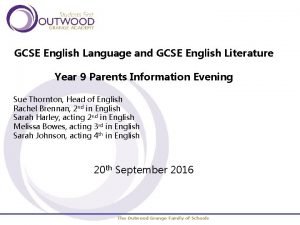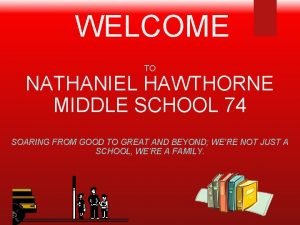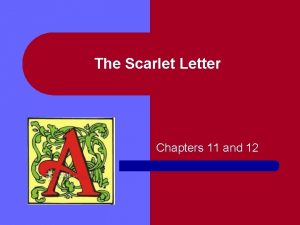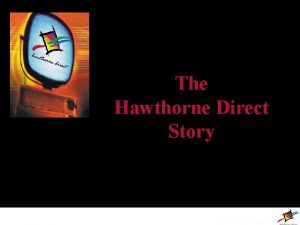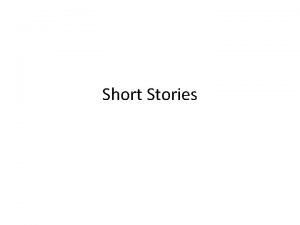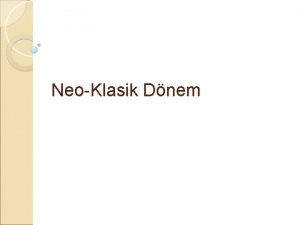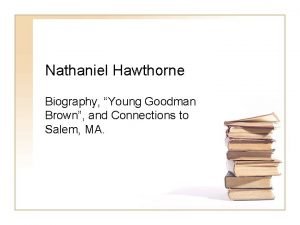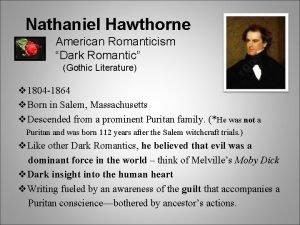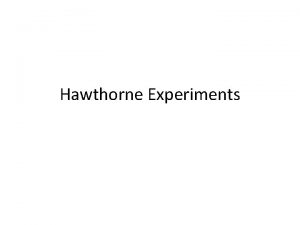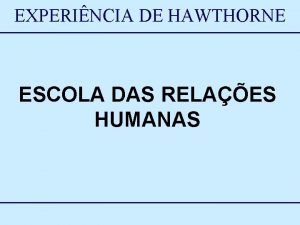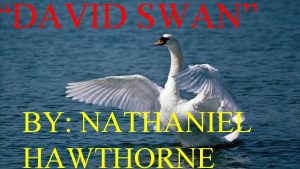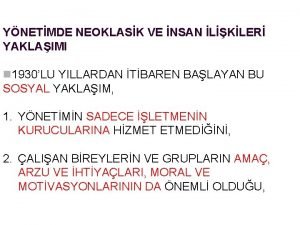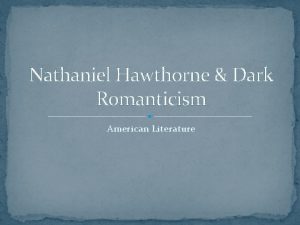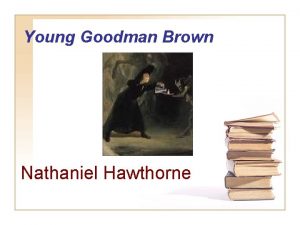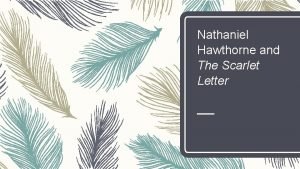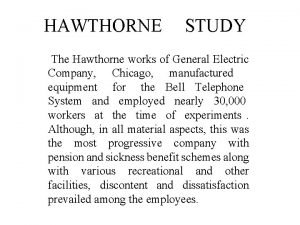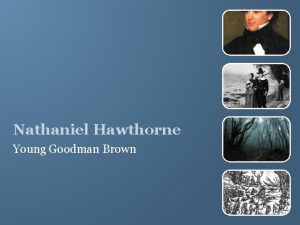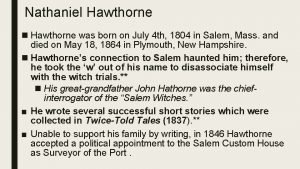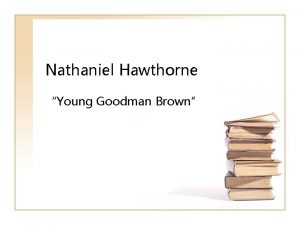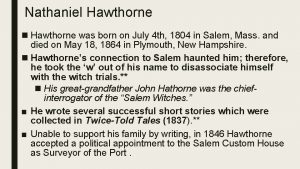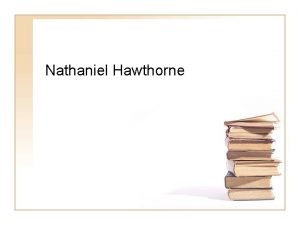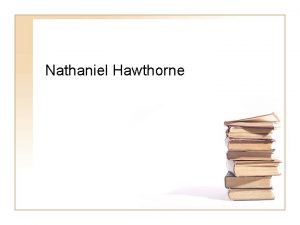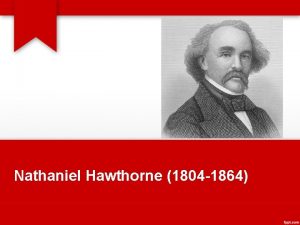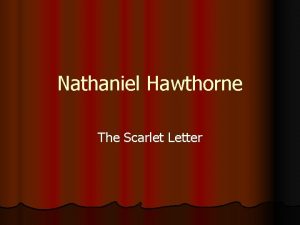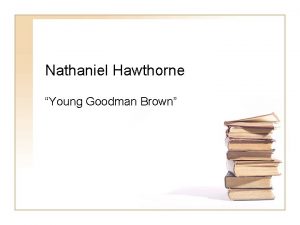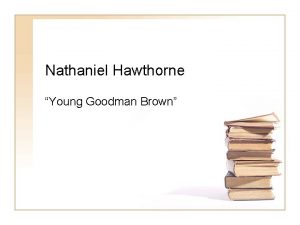Level Three English Revision Teacher Sean Hawthorne Revision



















![3. 5 Strategies to Use/Develop PROBLEM I have trouble understanding the Poems. STRATEGY [a] 3. 5 Strategies to Use/Develop PROBLEM I have trouble understanding the Poems. STRATEGY [a]](https://slidetodoc.com/presentation_image_h/d21df415835dca527026cee6f16c8bd4/image-20.jpg)


![3. 5 Strategies continued… I can’t write about [a] As above - learn the 3. 5 Strategies continued… I can’t write about [a] As above - learn the](https://slidetodoc.com/presentation_image_h/d21df415835dca527026cee6f16c8bd4/image-23.jpg)



- Slides: 26

Level Three English Revision Teacher: Sean Hawthorne

Revision Techniques Good study strategies are those that involve as many “brain” activities at the same time as possible. e. g writing and speaking at the same time or reading and writing at the same time or reading and speaking at the same time. Good study strategies also involve “active” rather than “passive” activities. You should be “doing” something with what you are trying to learn. e. g. re-writing essays rather than just reading them; improving existing essays; trying out new questions you haven’t tried before; self-testing your memory of quotes and terms. Good strategies may seem “harder” than other strategies but the time spent on them is much more worth while. e. g. spending 1 hour reading over notes may be an “easy” strategy to use but 1 hour spent rewriting the notes, or summarising them is going to be much more effective. It takes most people between 3 -9 times of going over a new concept or learning a new skill or word to actually ‘learn’ it. Don’t think you have learnt something until you have self-tested yourself a day or two later and know the answer.

Revision Techniques SUCCESSFUL § § § § § Re-reading the texts and summarising chapters. Summarising my notes into my own words Learning quotes/terms by self-testing strategies (eg flash cards, quizzes) Researching answers to questions Studying by asking myself or my friends exam questions Practising old exam questions Planning essay answers Looking for quotes for different questions Writing out full essays on new topics NOT SO SUCCESSFUL § § § Re-reading the texts Reading over my notes Reading exemplar essays Learning terms by reading over not Learning quotes by reading over notes Watching the video of the text

Level Three Response to Texts Assessment Schedule (2005) Achievement Develop a critical response to written text(s), using supporting evidence. A Achievement with Merit Achievement with Excellence Develop a critical response to written text(s) that integrates supporting evidence and shows perceptive understanding. Develop a critical response to written text(s) that integrates supporting evidence and demonstrates sustained insight. M E

Level 3 - Achievement Answers An answer that achieves will: Develop a critical response to relevant text(s) evidenced by: ・ recognisable essay structure ・ attention to, but maybe narrow interpretation of the question, possibly unbalanced and / or undeveloped [it will address the question] ・ satisfactory organisation but with stylistic inconsistencies ・ conventional / pedestrian / learned response. using supporting evidenced by: ・ familiarity with text(s) ・ attempts to support points with appropriate evidence ・ engagement with text(s) ・ some specific references to text(s) linked to discussion of the question.

Level 3 - Merit Answers An answer that achieves with Merit will: Develop a critical response to relevant text(s) evidenced by: a carefully structured essay ・ maturity of expression and thinking ・ answering the question; being clear in argument ・ keeping to the question ・ some occasional irrelevancies and / or clumsiness. that integrates supporting evidenced by: ・ use of quotation and reference / detail to reinforce points made in response to the question ・ use of appropriate terminology with ease and accuracy ・ knowledge of and familiarity with the text ・ quote weaving efforts that may be inelegant (or not present). that shows perceptive understanding evidenced by: ・ some maturity and perception ・ suggestion of inferences based on personal understanding and awareness of themes, craft and purpose, etc. §

Level 3 - Excellence Answers An answer that achieves with Excellence will: Develop a critical response to text(s) evidenced by: ・ a lucid essay with introduction giving scope and focus, a range of accurate and relevant points (with accurate referencing), a reasoned conclusion and generally accurate use of writing conventions ・ coherent and balanced argument and judgement. that integrates supporting evidenced by: ・ quote weaving ・ accurate referencing ・ accurate use of terminology ・ generous and apt detail in support of relevant points ・ accurate and comprehensive knowledge of text(s). and demonstrates sustained insight evidenced by: ・ maturity and perception in evaluating text(s) in terms of the question ・ demonstration of some original insights and judicious personal response to the text(s), and may be moving beyond the text(s) in evaluation ・ presentation of own position as reader.

Level 3 - Essay Introductions § Should be about four sentences § Include key words from the question § Write the name of the author and underline the title of the text § Outline the points you will cover in the essay § Contain a clear view point in response to the question § Impress the marker with a mature vocabulary

Introduction Examples Question: To what extent do you agree that novels use a clash of opposites to present ideas? Discuss. In the novel One Flew Over the Cuckoo’s Nest, author Ken Kesey makes strong use of a clash of opposites to convey his views on society. As a “protest novel”, One Flew Over the Cuckoo’s Nest is essentially a criticism of society’s tendency to repress individuality and natural expressions of sexuality. These ideas are expressed through contrasts of characters such as the protagonist Mc. Murphy, the antagonist Nurse Ratched, the other patients of the psychiatric ward where the novel is set and different types of female characters. Question: To what extent do you agree that plays are written to teach us about ordinary people and their moral dilemmas? Discuss. According to Marion Starkey, the Salem witch trials of 1692 are “an allegory of our times”. Arthur Miller’s play The Crucible, with its strong and perceptive insight into the moral dilemmas of ordinary people, clearly illustrates the truth of this statement. 1692 in Salem was a trying time for all involved, with accusations of witchcraft rife, and fear in the ari: it is a t dark times like these that peoples principles and moral standings are stretched - sometimes to breaking point - and much can be learnt of the nature of moral dilemmas in a play such as The Crucible, set during the such turmoil. Miller use the hardship present in 1692 and in his play to teach ordinary people - of any era - about such timeless issues as whether one should conform or break away from society, the causes and implications of scapegoating and the importance of name.

Essay Body Paragraphs § § § § § Open each paragraph with topic sentences which show a clear point of view and which relate directly to the question. After each statement support it with several examples which are thoroughly explained. Use quotes and specific details from the text. Consider writer/director’s purpose. Focus on techniques - aspects of the writer/director’s craft. Use correct terminology. Incorporate relevant biographical, historical, or contextual information that relates to your topic and shows an appreciation of the purpose of the text, author. Relate the text and its ideas/characters to contemporary society - why is it worth studying? What does it have to ‘teach’ us today? Consider the effect on you/us - what do we as readers get out of the text? Evaluate the effectiveness of the text, examples, in achieving the author’s purpose and/or in relation to the question. Incorporate awareness of literary criticism and elements of genre through the body paragraphs. Mature vocabulary and varied sentence structure adds interest and ‘life’ to an essay.

T. E. E. P. E. E. § § § T - topic E - examples E - explanation P - purpose E - effect E - evaluation

Level 3 - Four Level Guide § Level 1 “on the line” Factual level of understanding Aim: to accurately identify key and relevant information/ideas explicitly stated in the text. Shown through use of specific quotes and details from the text to support your points. § Level 2 “between the lines” Interpretative level of understanding Aim: to reflect on and interpret the information, to pick up the inferences in the text and to draw conclusions from the text. Shown by evaluative comments and personal response. § Level 3 “beyond/behind the lines” Applied level of understanding Aim: to apply the content of the text to broader situations of generalisations beyond the text, but related to, or generated from, the text. Show by comments that link ideas from the text to other societal contexts, characters or ideas. § Level 4 “critic element” Critical level of understanding Aim: to show detailed appreciation of the crafting and purpose of the author/director as well as awareness of how the text exhibits or develops aspects of the genre it is from. Shown by references to critics of the work/genre, reference to techniques used by the author and evaluative comments about the place/worth of this text as an example of its genre.

3. 2 Novel Example The idea of the importance of sexuality is furthered by Kesey’s presentation of female characters in the novel. Women in One Flew Over the Cuckoo’s Nest are presented as either of two contrasting types - those who express their sexuality freely and help men to assert their masculinity, and those who deny men their sense of manhood. Of this later type, Nurse Ratched is the most obvious example; but we also find that Vera Harding brings down her husband by making him feel inadequate, when she says “O Dale, you never do have enough, do you? ” Billy Bibbit is a second example of this - both his mother and Nurse Ratched treat him as a child, denying him the right to manhood. These types of women are contrasted with the characters of the two prostitutes, Candy and Sandy, who express their femininity freely. Candy helps Billy Bibbit achieve “manhood” by sleeping with him - this is portrayed as a positive thing by his loss of stutter directly afterwards. Thus, through this clash of opposite types of women, Kesey suggests that the role of women in society is to be explicitly ‘feminine’ and help men assert their masculinity. He says women must deny their womanhood in order to fulfill roles of power and that they are likely to become tyrannical as a result. This was Kesey’s answer to the uprising of feminism that was occurring at the time of his writing. NZATE Exemplar Book pg 92

3. 2 Angela’s Ashes Example In Angela's Ashes Mc. Court holds to narrative convention and tells the story from a first person perspective, using his own voice and thoughts to recount the events of his childhood. However, Mc. Court differs from other autobiographers in the fact that the "voice" he has chosen to use is not that of an experienced man looking back on his childhood. Instead it is the voice of the child itself: Mc. Court as a young boy. This technique is used deliberately by Mc. Court to give the reader a strong trust in themes that Frank is communicating. Equally important in telling the story, however, are things that Frank does not think about or fails to understand. For example in one of the opening passages of the book: "Malachy goes down…. There's blood. Oh, God. Blood is bad. My mother will kill me. " In this example the sentences are very simple, reflecting a child's simple thought processes. To young Frank Mc. Court blood is simply bad because it means that his mother will be angry, but the reader can think and understand more than young Frank can, and understands the reasons why Frank's mum will be angry at him: namely that he was supposed to be looking after his brother at the time and that her anger at Frank will mainly be comprised of distress for Malachy. The use of the simple syntax and vocabulary is effective in developing Mc. Court’s narrative voice and the complexity of expression develops as Frank ages. Often in Angela's Ashes it is not what Frank is doing or thinking that is important as much as ‘how’ it is narrated. Instead, important themes are communicated to the reader by how Frank's acceptance of them or his inability to understand contrasts sharply with modern, or adult, views on the same themes. Wasan Forsyth 2006

3. 3 Othello Example Despite establishing Othello as the sympathetic protagonist, Shakespeare continues to depict the all-encompassing fury of this tragic hero, as he becomes convinced that Cassio has "Done thy service" (as Iago believes Othello has done his). Iago's vicious and continually more explicit suggestions of Desdemona's adultery drive him mad. "Jealousy consumes my innards like a poisonous mineral, " Othello rages, cursing Desdemona as a” strumpet" and slandering her "Excellent, excellent wretch!" It is only a result of Shakespeare's previous establishment of Othello as "of a true, loving nature" that the audience continues to relate to him. According to Leavis, though himself critical of this interpretation, Bradley sees Othello as "a nearly faultless hero whose strength and virtue are turned against him. " The tragedy is not simply jealousy, but that it was his love that created an equally intense hate. Shakespeare is conscious of crafting the message that the two emotions are closely intertwined. Othello himself acknowledges this: "Of one who loved not wisely, but too well. " His passion, abused, is what kills Desdemona. Sympathising with Othello, the audience sees that he is "perplexed in the extreme" by jealousy due to his love for Desdemona tied with the malicious cunning of Iago. His reaction is not necessarily of detriment to his character. Instead what the audience sees is that jealousy is a wretched emotion, and as the worldly Emilia says, "Tis a monster, Begot upon itself, born on itself. " Shakespeare's insight into the human psyche is a universal message, as relevant to modern society as it was to that of Elizabethan times. Hannah Clark 2006

3. 4 American Beauty Example Another method of ensuring the integration of the storylines and thus the unity of the film is the number of parallels and echoes in action and characters. Lester tells us in his opening voice-over that he "is dead already"; Fitts' wife Barbara – an even greater casualty of the 'American Dream' – is almost catatonic, a clear parallel with Lester is shown several times from an overhead shot as he lies in bed; this shot will be used also for Jane and Ricky near the end, and the final montage includes several overhead shots. In the climactic scenes, Lester says to the Colonel, "Just tell me what you need. " He uses similar words to Angela a few minutes later: "So. . . are you going to tell me? What you want? " Both Fitts and Angela make advances to Lester, who rejects both, equally gently and compassionately, both approaches having been the result of mistaken ideas. Mendes consciously develops his characters and storylines through these parallels and repetitions in the action. Another significant parallel action involves several characters stripping. Carolyn strips to her petticoat to clean the house she hopes to sell; Lester strips completely to see what he has to offer Angela; and later, in a tender and beautifully erotic scene, Jane stands at her window and removes her bra to give herself to Ricky. Later he is comfortably nude as he films, and is filmed by, Jane. With these scenes Mendes places the viewer in a privileged position as we have more information about the characters than they have of each other. We get to see these moments of vulnerability in the characters to make us empathise with them more. By doing this Mendes subtley develops his themes and ideas, as well as making the film feel coherent and unified. Adapted from Jo Morris Essay

Essay Planner Grid Questions Key words Topic Sentence Point One Point Two Point Three Point Four (? ) Examples & Explanation Examples/Quotes & Specific Details Purpose & Effect Evaluation Author’s Purpose & Techniques/craft Beyond the text & Lit Crit element

Comment Banks As well as learning quotes and examples you should develop comment banks/ phrase banks for different aspects of T. E. E. P. E. E. i. e. comments for mentioning author’s purpose, or author’s use of techniques and craft, or referencing critics or authors, or comments to link points and ideas etc. Work together with others doing your text to do this. Look at exemplar essays and find useful phrases and examples.

3. 5 - Unfamiliar Texts § § There are eight questions. Three questions offer opportunities for Achievement only. The remaining five questions provide opportunities for Achievement, Achievement with Merit, or Achievement with Excellence. Grades can credit down so 3 A plus 1 M is Achievement with Merit Achievement with Excellence Respond critically to ideas and language features. Respond critically and perceptively to ideas and language features. Respond critically, with sustained and detailed insight, to ideas and language features. A candidate must show 4 pieces of evidence of meeting the criterion for Achievement. A candidate must show 2 pieces of evidence of meeting the criterion for Achievement plus 2 pieces of evidence meeting the criterion for Achievement with Merit. A candidate must show 2 pieces of evidence of meeting the criterion for Achievement plus 1 piece of evidence of meeting the criterion for Achievement with Excellence. 4 A 2 A plus 2 M 2 A plus 1 E
![3 5 Strategies to UseDevelop PROBLEM I have trouble understanding the Poems STRATEGY a 3. 5 Strategies to Use/Develop PROBLEM I have trouble understanding the Poems. STRATEGY [a]](https://slidetodoc.com/presentation_image_h/d21df415835dca527026cee6f16c8bd4/image-20.jpg)
3. 5 Strategies to Use/Develop PROBLEM I have trouble understanding the Poems. STRATEGY [a] Read both the poem and the passage through once. The poem and the passage will be related to the same topic in some way. Could be contrasting ideas or different ways of viewing the same ideas - but they WILL be related. If you understand the passage it may help you to understand how the poem relates to it. [b] Read the poem for its “literal” or “obvious” and “surface” meaning first before you look for “figurative” meanings. This will help you not to get carried away with seeing things that aren’t there. Stay “real”. [c] Stanzas (verses) of poems are like paragraphs in prose passages. That is they will be on different “topics” or “ideas” or “images”. Look for the reasons why the poet has divided the poem into sections the way that he/she has - it will show a progression of ideas or images - just like an essay. All the “paragraphs” will combine together to ‘prove’ a point. [d] If you’re still having trouble the next thing is to read each line very carefully - word by word - and think about the connotations of words used and repeated ideas or images that come up in a stanza or the poem as a whole. The poet has chosen these words for a reason - why this word in this place? [e] Read the poem “aloud” in your head to help you to “hear” the rhythm and pace and pauses and sound effects the poem creates. You should practise this at every opportunity.

3. 5 Strategies continued… I have trouble writing about the “effects” of the language devices. [a] No easy solution here. This depends on being able to relate the effect of the device and example back to the context and overall meaning/purpose of the passage. In general any device used will be attempting to show an idea or image in a new way - to bring the qualities of either image or sound to the idea being expressed. This can be hard to explain sometimes. Examples of imagery - ie simile, metaphor, personification etc can be easier to explain than sound devices. Just because alliteration is easy to find - it may not be the best to talk about because explaining the effect can be hard. I can never explain [a] Make sure you’ve done the suggestions for how to understand a poem first. what the tone of a [b] Understand that tone is about the emotional feeling or mood of a piece of writing. It conveys the author’s attitude to the subject matter. Tone may not be obvious. passage is. [c] Firstly, identify “emotive” words that are used in the text and decide what “mood” or “connotations” these have. 1 st clue. [d] Secondly, look at the overall meaning of the piece and then see how these words link back to that meaning. 2 nd clue. [e] Repeated words or ideas are likely to be the most important ones and should also be a clue to tone.

3. 5 Strategies continued… I don’t know the terms. I can’t find them in the text’s and I can’t explain why they’ve been used. [a] You must learn the terms and definitions through self-testing of memory. There are several hundred possible terms. Obviously you can’t learn them all. Choose about 25 - 30 terms. Self-test yourself 3* a week for between 10 -20 mins at a time 10 terms at a time. Don’t include terms like simile, metaphor, alliteration etc which you (should) already know. Choose a range of terms/devices from: Syntax ones; Figurative language ones; Sound device ones; language ones. Your teacher has likely given you a list. Learn as many of these as you can. [b] Practise identifying terms and asking questions about anything you read. ie while you’re reviewing literature notes, re-reading books, learning science, reading the newspaper. . . If you are reading and NEVER ask yourself the question about what technique is this? what effect does this have? how does this link to the meaning of the text? are there any patterns of imagery? etc - you’ll never be testing or reinforcing your knowledge. You must practise!
![3 5 Strategies continued I cant write about a As above learn the 3. 5 Strategies continued… I can’t write about [a] As above - learn the](https://slidetodoc.com/presentation_image_h/d21df415835dca527026cee6f16c8bd4/image-23.jpg)
3. 5 Strategies continued… I can’t write about [a] As above - learn the definitions of different types of sentences and ways of ordering syntax elements words. What effects do different types of sentences have. Self-test yourself. [b] Practise identifying types of syntax in anything you read. (as above). You’ve got to ask yourself the questions to think about it - how else can you expect to learn it? I find it hard to write about and identify the similarities and differences between the poems and the prose passages or between parts of the poem or prose (I. e beginning vs end etc). [a] Ideas. Look at the ideas in the two passages first. You are probably better at discussing and identifying similarities and differences in the ideas of the two texts than in “style”. [b] Tone. Consider the “tone” of the two passages. They are likely to be different. How and why? [c] Imagery. Is there any common or contrasting imagery being used? Does one piece use more imagery than the other? [d] Style. How are the two passages divided up? Do they both fall into sections? How do the sections relate or differ? Are there types of words or ways of using words that relate or are different between the passages? [e] Syntax. How are the words actually organised and ordered between the two pieces? Any patterns that emerge? Punctuation - how is this used in the pieces? [f] Diction. What types of words/vocabulary are chosen or used? Verbs? Adjectives? Past tense vs Present tense? Emotive words or clinical/detached language etc. Consider how they are similar or different between the two passages.

3. 5 Strategies continued… F. E. E or Q. T. E This forms the foundation of every answer in unfamiliar texts F - feature/technique E - example(s) - quote words & phrases E - effect - explain the effect of the examples and the use of the technique (Q. T. E. = quote, technique, effect)

3. 5 Merit & Excellence Answers To gain Achieved you usually need to ‘do’ “F. E. E. ” once, and to gain a Merit you need to do it two or three times - accurately. For Excellence it is both the number (usually three) and quality, of features, examples and explanations of effect that make the difference. Being able to identify and comment accurately on aspects of ‘syntax’ or ‘form’ is also considered more difficult than being able to identify figures of speech (metaphors, alliteration etc) and thus is more likely to enable you to get ‘Excellence’. Also - as in essays - being able to ‘weave’ discussion of techniques with author’s purpose and how the reader responds lifts the answer up a bit 2005 Criteria: Achieved = Literal - On the Line - factual/accurate identification Merit = Relational - Between the Lines - how examples & techniques relate to and build on each other Excellence = Evaluative/Interpretive - Beyond the Line - evaluating effectiveness in terms of author’s purpose and as a reader responding to the text

3. 5 - 2004 Exemplar Answer 5. Describe the effects achieved by the combination of the following phrases to describe the flat in lines 4 -9. “scrim spinnakers”, “breezy window sashes”, “out of kilter” ACHIEVED LEVEL MERIT LEVEL EXCELLENCE LEVEL Identifies the rickety, ramshackle, unstable nature of the flat; it is not like a home. Links the ramshackle or unstable idea to boats and sailing and the instability of winds and sails. Explains the metaphor more fully through picking up on the colloquial / cumulative effects of the combination. “The scrim blows out from the wall like a sail as it is so draughty. The window frames are also battered by the wind; in fact, the wind seems to nearly blow the house away. The frames are not aligned with the floor, and you canユt open or close the windows. Everything is lop-sided, moving, broken, in a state of flux, affected like the students, by the outside world. ” Cannot just paraphrase.
 Sean hawthorne
Sean hawthorne Archaic pronouns
Archaic pronouns Passive revision
Passive revision Equivalent record form deped
Equivalent record form deped Good morning teacher good morning teacher
Good morning teacher good morning teacher Ocr cambridge technicals level 3 sport unit 3 revision
Ocr cambridge technicals level 3 sport unit 3 revision Eduqas a level music
Eduqas a level music Computer science revision a level
Computer science revision a level Outwood revision english
Outwood revision english Igcse english tips
Igcse english tips Revision.english.outwood
Revision.english.outwood Language
Language Allegory young goodman brown
Allegory young goodman brown Nathaniel hawthorne middle school 74
Nathaniel hawthorne middle school 74 Glen hawthorne
Glen hawthorne Chapter 11-12 scarlet letter
Chapter 11-12 scarlet letter Hawthornedirect.com
Hawthornedirect.com Summary of the
Summary of the Insan ilişkileri yaklaşımı
Insan ilişkileri yaklaşımı Nathaniel hawthorne background
Nathaniel hawthorne background Dark romanticism in the scarlet letter
Dark romanticism in the scarlet letter Relay room experiment
Relay room experiment Hawthorne studies in management
Hawthorne studies in management Escolas das relações humanas
Escolas das relações humanas Theme of david swan
Theme of david swan Hawthorne araştırmaları
Hawthorne araştırmaları Hawthorne araştırmaları
Hawthorne araştırmaları

